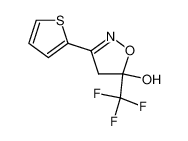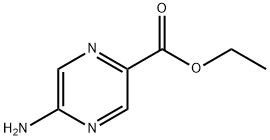Hi, I'd like to ask—why does uncompetitive inhibition lower both Km and Vmax in enzyme kinetics? How does this type of inhibition differ from competitive and noncompetitive inhibition? Can you explain the mechanism behind uncompetitive inhibition and its effects on enzyme activity? Thanks!
Why Does Uncompetitive Inhibition Lower Km and Vmax?
Related Encyclopedia

- 138668-80-1
- C65H100N20O17
- 1433.61
- All (1)
- China (0)
- (1)

- 293759-12-3
- C8H6F3NO2S
- 237.19900
- All (0)
- China (0)
- (0)
- 882293-03-0
- C14H9ClF3N3O5S3
- 487.88200
- All (0)
- China (0)
- (0)
- 882310-41-0
- C18H29N3O4S
- 383.50600
- All (0)
- China (0)
- (0)
- 882312-87-0
- C14H13F3N4OS2
- 374.40400
- All (0)
- China (0)
- (0)
- 882308-70-5
- C19H11Cl3N2S
- 405.72800
- All (0)
- China (0)
- (0)
- 883004-81-7
- C24H21N3O
- 367.44300
- All (0)
- China (0)
- (0)
- 882283-47-8
- C17H15ClN2O2S
- 346.83100
- All (0)
- China (0)
- (0)
- 959579-97-6
- C15H13BrClN3S
- 382.70600
- All (0)
- China (0)
- (0)
- 882321-64-4
- C18H11NO2S
- 305.35000
- All (0)
- China (0)
- (0)
Related Products More >
-
- 68037-01-4
- CNY 43.0000
- 850kg
-
- 68037-01-4
- CNY 43.0000
- 850kg
-
- 68037-01-4
- CNY 43.0000
- 850kg
-
- 68037-01-4
- CNY 43.0000
- 850kg
-
- 68037-01-4
- CNY 43.0000
- 850kg
-
- USD 470.0000
- 200kg
-
- 944396-07-0
- Request For Quotation
-
- 944396-07-0
- Request For Quotation


 沪ICP备2021018848号-5
沪ICP备2021018848号-5


In an uncompetitive inhibition scenario, the inhibitor binds to the enzyme-substrate complex to form a dead-end complex that cannot proceed to the product formation step. This binding effectively reduces the concentration of active enzyme-substrate complexes available for the reaction, thereby lowering the maximum reaction velocity . Since fewer enzyme-substrate complexes can convert to the product, the overall rate of the reaction decreases, even at high substrate concentrations.
The apparent Km also increases in uncompetitive inhibition. The Km value represents the substrate concentration at which the reaction rate is half of the maximum velocity . When the inhibitor binds to the enzyme-substrate complex, it effectively reduces the concentration of active enzyme-substrate complexes. As a result, the enzyme appears to have a lower affinity for the substrate, leading to an increase in the apparent Km. This means that a higher substrate concentration is required to achieve half of the maximum reaction rate.
In enzyme kinetics, uncompetitive inhibition is characterized by its impact on both Vmax and Km. This is in contrast to competitive inhibition, which only affects Km by competing with the substrate for binding to the free enzyme, and noncompetitive inhibition, which only affects Vmax by binding to the enzyme in a way that does not involve the substrate.
Understanding uncompetitive inhibition is crucial in various fields, including biochemistry, pharmacology, and drug design. It helps in predicting the effects of inhibitors on enzyme-catalyzed reactions and in designing drugs that can specifically target enzymes involved in disease pathways. For example, in the development of enzyme inhibitors as therapeutic agents, understanding the type of inhibition can guide the design of more effective drugs with fewer side effects.
In summary, uncompetitive inhibition lowers Vmax and increases Km because the inhibitor binds to the enzyme-substrate complex, reducing the concentration of active complexes and altering the reaction pathway. This type of inhibition is distinct from other forms of inhibition and has significant implications in enzyme kinetics and drug design.
Enzyme Kinetics and Inhibition
Enzyme kinetics studies the rates of enzyme-catalyzed reactions and the factors that influence them. The Michaelis-Menten equation describes the relationship between the reaction rate and the substrate concentration . Two key parameters are Vmax, the maximum rate of the reaction when the enzyme is saturated with substrate, and Km, the substrate concentration at which the reaction rate is half of Vmax.
Inhibition occurs when an inhibitor molecule interacts with the enzyme, reducing its activity. There are three main types of inhibition: competitive, noncompetitive, and uncompetitive.
Uncompetitive Inhibition
Uncompetitive inhibition is characterized by the inhibitor binding only to the enzyme-substrate complex, not to the free enzyme. This binding prevents the ES complex from converting to the product, effectively reducing the number of active enzyme molecules available for catalysis.
#Mechanism and Effects
When an uncompetitive inhibitor binds to the ES complex, it prevents the formation of the product. This binding has two main effects on enzyme kinetics:
1. **Reduction in Vmax**: Since the inhibitor binds to the ES complex and prevents it from forming the product, the overall rate of product formation decreases. This directly reduces the maximum velocity of the reaction. In other words, even if the substrate concentration is very high, the enzyme cannot reach its full potential rate of catalysis because a significant portion of the ES complexes are inhibited.
2. **Reduction in Km**: The apparent Km also decreases in the presence of an uncompetitive inhibitor. This might seem counterintuitive at first, but it can be understood by considering that the inhibitor only binds to the ES complex. As a result, the enzyme appears to be more efficient at binding the substrate because the inhibited ES complexes are effectively removed from the pool of active enzyme. This makes the enzyme seem to have a higher affinity for the substrate, leading to a lower apparent Km.
Comparison with Other Types of Inhibition
Enzyme Kinetics and Inhibition
Enzyme kinetics studies the rates of enzyme-catalyzed reactions and how various factors influence these rates. The Michaelis-Menten equation describes the relationship between the reaction rate ), the substrate concentration ), the maximum reaction rate ), and the Michaelis constant ). is the substrate concentration at which the reaction rate is half of , while represents the maximum rate achievable when the enzyme is saturated with substrate.
Inhibition occurs when an inhibitor molecule binds to an enzyme and reduces its activity. There are three main types of inhibition: competitive, noncompetitive, and uncompetitive.
Uncompetitive Inhibition
Uncompetitive inhibition is unique because the inhibitor binds only to the enzyme-substrate complex , not to the free enzyme. This binding prevents the ES complex from converting into products, effectively reducing the number of active enzyme molecules available for catalysis.
#Mechanism of Uncompetitive Inhibition
1. **Binding to ES Complex**: The uncompetitive inhibitor specifically binds to the enzyme-substrate complex , not to the free enzyme. This binding prevents the ES complex from proceeding to form products.
2. **Reduction in Active Sites**: Since the inhibitor binds to the ES complex, it reduces the number of ES complexes that can convert to products. This means fewer active sites are available for catalysis, directly affecting the maximum rate ) of the reaction.
3. **Effect on and **: